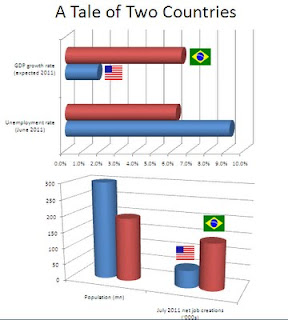This week's ruling by a French court seems at first of quite earth-shattering importance: for the first time since World War II, a former French head of state is convicted of committing crimes (in this case misuse of public funds) and is sentenced to two years in jail. But look more closely and you realize that this judicial decision is as connected to justice as Alaska is to Madagascar.
The facts go back a good quarter century when Jacques Chirac was not yet president of France, just mayor of Paris (but considering how Paris is actually a midsize version of France, he was for all intents and purposes almost president.) In his Etat dans l'Etat which was his Paris fief, Chirac behaved like a medieval baron, hiring (especially for phoney jobs known in French as emplois fictifs where town hall positions were used to pay people who never carried out a single task for the city, but many for Chirac and friends), firing, using public funds as he saw fit with scant regard to rules and regulations. Why should he? He felt above such mundane things as the law. And subsequent events proved him right. It took decades for the law to close in on him, because the whole legal system in our Western pseudo-democracies is designed to punish harshly the small fry, while members of the elite remain scot-free. Among the examples used to shield Chirac from justice: while president, he made sure a new law on presidential immunity was voted so that he could remain literally above the law, even for crimes committed before he became president - and we make fun of Berlusconi who engineered laws to protect himself from zealous judges.
After Chirac left office in 2002, the Sarkozy government made sure his predecessor was left alone. Now, we all know that there is little love lost between the two men: Chirac tried every trick in the book to prevent Sarkzoy's ascent, as revenge for the "Dwarf" backing his opponent, Balladur, in a previous election. So why would Sarkozy care about Chirac's fate? If anything he should be happy to see Chirac in jail. Not really. These guys are smart, they know when it is better to put their rivalry on hold and think about higher things. Sarkozy has no interest in a judicial precedent, of having a former French president prosecuted and, God forbid, even convicted, since he knows he would then be the next one (read my blog on Sarko's own abuse of his position.)
So Sarkozy did everything he could to protect Chirac. First, he made sure that the case would drag as long as possible after Chirac left office (five years). Then, and this is one of the more shocking aspects of the Chirac case, the public prosecutor (who in this pseudo-democracy acts on order from the government - no prize for guessing whose orders) decided to drop all charges against Chirac. Now, that was too much in light of the overwhelming evidence as gathered by all the files seized and the witnesses heard. So, a seemingly courageous judge, egged on by pro-justice militants, said, "I don't care that you drop the charges, Mr Prosecutor, there is enough in this case to convict Mr Chirac." And so he did, to two years in jail. But, and here's the rub, he made sure it was a suspended sentence meaning Chirac would not actually have to go to jail.
Yes, you have heard right. If you are lowly riff raff and get caught stealing, you can be sure you will end up as a guest of the French Republic for a few years. But if you belong to the elite, no such worry. And then you wonder why people laugh derisively at the lofty motto of the state, Liberty, Equality and Fraternity. In France, as in all other pseudo-democracies, Lady Justice is far from blind: she has one eye open to recognize VIP's and be lenient towards them. And yet, one of the first decisions of the French Revolution was to abolish all privileges that the mighty had. Two centuries on, privileges for the elite still live on. Now you understand why the "system" made sure the case dragged for how long as possible, so that even if he were to be convicted, Chirac could claim to be too old and sick to serve his sentence. And yet, read the French papers and watch television, and the whole French political class is cheering and saying, "See, we have truly independent justice." They are elated that they have managed to protect one of theirs from the same fate most of them should know: jail.
The great French fable writer, La Fontaine, wrote in the 17th century that:
Selon que vous serez puissant ou misérable,
Les jugements de cour vous rendront blanc ou noir.
(Depending on whether you are rich or poor
Court rulings will acquit or condemn you)
Jean de La Fontaine, Les Animaux malades de la peste, 1678.
Lest you believe that my native country is the only one where double standards apply when it comes to justice, I have some enlightening news for you: the same thing happens in other Western mock-demcoracies where the rule of law is supposed to apply. In addition to Italy's already mentioned and notorious Silvio Berlusconi, Britain's Tony Blair and former US president George W. Bush should be in jail now for war crimes: didn't they wage a war which was found to be completely illegal (says the UN) and unjustified (say themselves after no weapons of mass destruction were found) but killed 100,000 innocent Iraqis (not to mention 4,500 American servicemen)? Shouldn't these two men, along with a host of Israeli prime ministers and generals, be now in the dock of the International Criminal Court in The Hague? No way, only Arab, Latin American, Asian and African rulers commit crimes, not Western ones. Funny, isn't it, that when it comes to individuals we find in all countries the same proportion of criminals, but not when we deal with politicians. In the West, politicians are angels. Yeah, right!
Feb. 2019 update: President Macron just nominated Juppé to the highest court in the land, the Constitutional Court. Yes, your eyes aren't playing tricks on you: he who is going to ensure people uphold the country's top law is himself a convicted felon.
Interestingly, Ford's outrageous act came at the same time when Chirac became mayor of Paris and was starting to put in place the intricate web of patronage, corruption, phoney jobs (but real salaries and cost to taxpayers.) If he ever worried about whether he might be held accountable one day, he just looked across the pond and the unedifying example of the White House shenanigans, and just shrugged his shoulders saying to himself, "Nothing to worry about."
For a quarter century he was right. The wheels of justice grind slowly, if at all, when we are dealing with the elite. And yet, had justice done its job in a timely fashion, Chirac would have been caught in the 1980's and jailed (I doubt he could have claimed old age and bad health then) and we would have been spared his presidency which, by all accounts, was an utter failure. There are indeed many advantages to having an efficient justice system rather than the two-tiered parody of justice we currently have.
The struggle for equality, the rule of law, the principle that NO ONE should be be above the law, for a truly blind justice, continues.

















